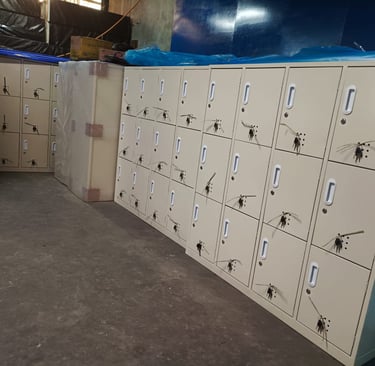The Advantages and Disadvantages of Metal Stamping in Indonesia
Discover the key advantages and challenges of using metal stamping in Indonesia. Learn how to optimize your production with IW Pratama!
4/28/20252 min read


The Advantages and Disadvantages of Metal Stamping in Indonesia
Metal stamping is a vital process in the manufacturing industry, especially for producing precision components at large volumes. In Indonesia, the metal stamping industry continues to grow, supporting sectors such as automotive, electronics, and construction. However, like any manufacturing process, metal stamping has its own strengths and challenges. Let’s take a closer look at the advantages and disadvantages of metal stamping in Indonesia.
Advantages of Metal Stamping in Indonesia
1. Cost-Effective for Large Volumes
Metal stamping is highly cost-efficient when producing large quantities. Once the die is made, the per-piece production cost becomes significantly lower compared to other fabrication methods.
Tip:
For mass production needs, Indonesian manufacturers like IW Pratama offer competitive pricing while maintaining high quality.
2. High Precision and Consistency
Modern stamping techniques in Indonesia use advanced CNC machines and automation to achieve excellent precision and repeatability, ensuring uniformity across thousands of parts.
3. Fast Production Speeds
Metal stamping offers high-speed production capabilities. This is a major advantage for industries with tight deadlines or large-scale projects.
4. Access to Skilled Labor and Local Material Supply
Indonesia boasts a growing pool of skilled technicians and engineers. In addition, local sourcing of raw materials like stainless steel and aluminum reduces supply chain costs and lead times.
5. Government Support for Manufacturing
The Indonesian government actively supports the local manufacturing sector through incentives, free trade agreements, and infrastructure development, helping manufacturers expand their reach regionally and globally.
Disadvantages of Metal Stamping in Indonesia
1. High Initial Tooling Costs
One of the main drawbacks is the high upfront cost of designing and manufacturing custom dies and molds. This makes metal stamping less ideal for small-batch productions.
2. Limited Flexibility for Design Changes
Once the tooling is made, making changes to the design can be costly and time-consuming. Therefore, careful planning is critical from the start.
3. Quality Variations Among Providers
Not all metal stamping companies in Indonesia maintain the same quality standards. Choosing an inexperienced or poorly equipped provider can result in product defects and delays.
Tip:
Partner with reputable companies like IW Pratama to ensure consistent quality and reliable delivery.
4. Maintenance and Downtime Risks
The stamping machines and dies require regular maintenance. Without proper care, production downtime can occur, affecting project timelines.
Conclusion
Metal stamping in Indonesia offers a powerful combination of cost-effectiveness, speed, and quality for large-scale manufacturing. However, businesses must be mindful of the initial tooling costs and the need for precision in selecting the right partner.
By working with experienced providers like IW Pratama, you can maximize the benefits while minimizing the risks associated with metal stamping production.
👉 Looking for reliable metal stamping services in Indonesia?
Contact IW Pratama today for customized solutions tailored to your manufacturing needs!
